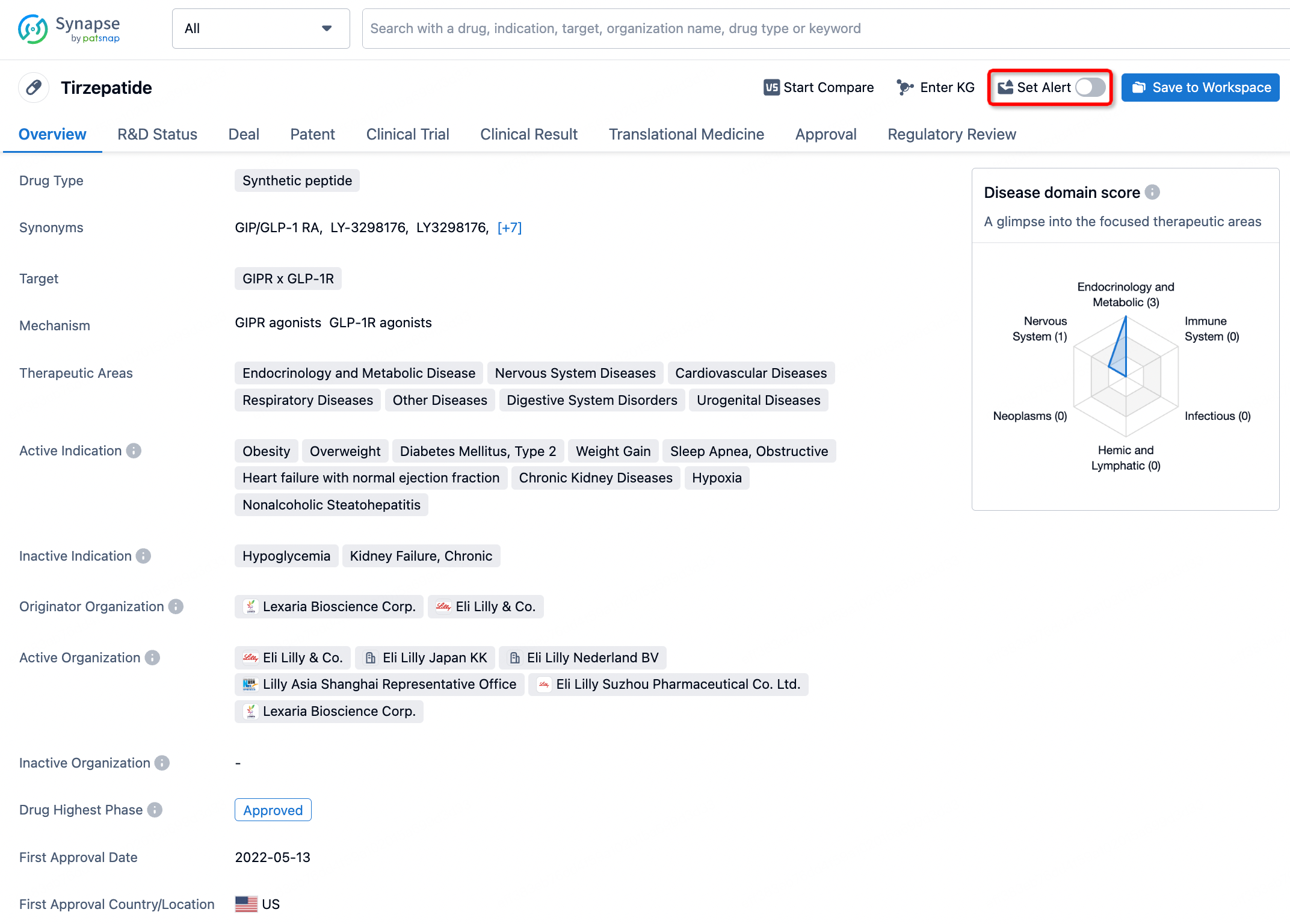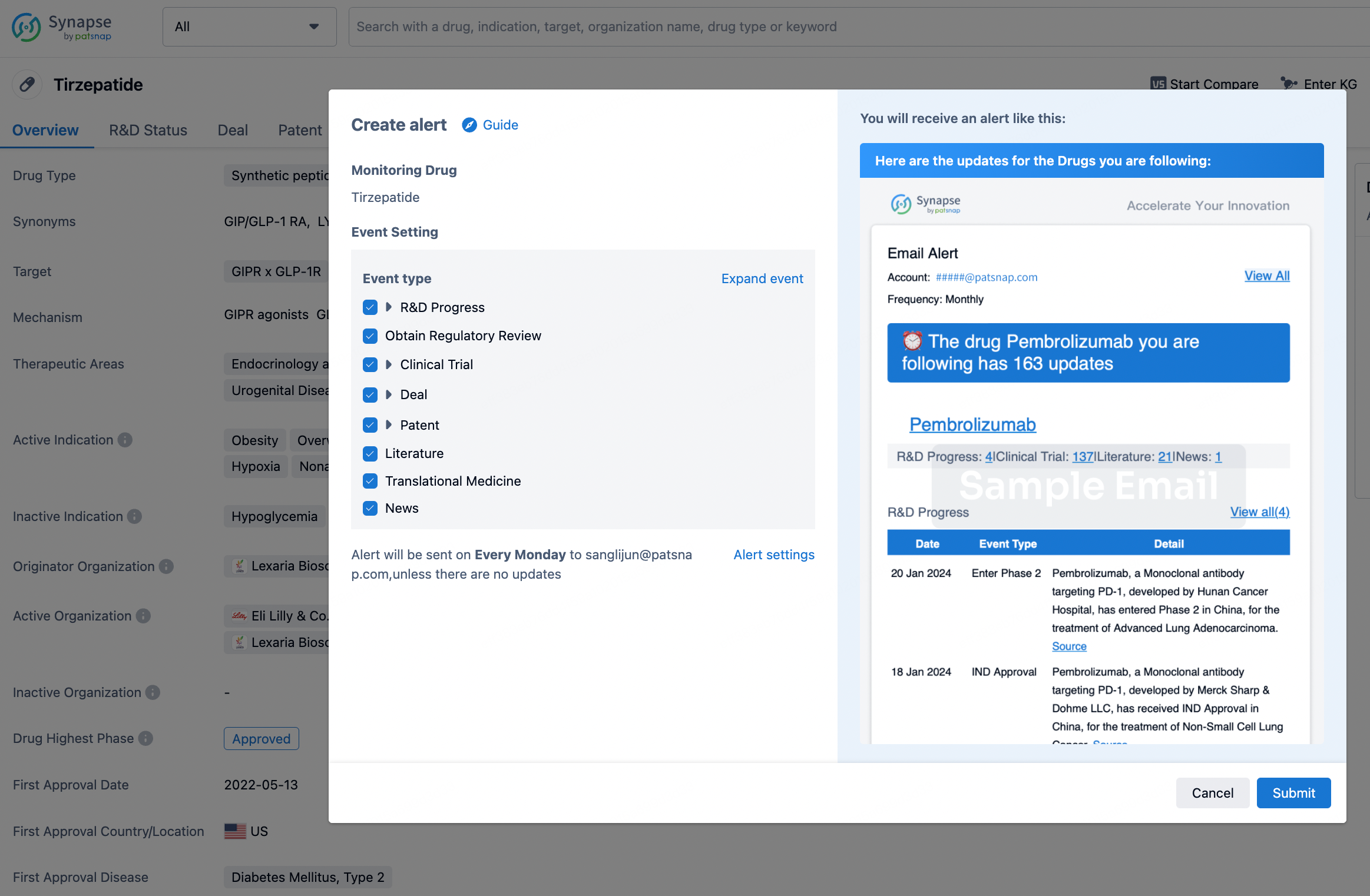Request Demo
What is Sulfathiazole used for?
15 June 2024
Introduction to Sulfathiazole:
Sulfathiazole is a sulfonamide antibiotic that played a pivotal role in the treatment of bacterial infections before the development of more advanced antibiotics. It falls under the class of drugs known as sulfa drugs, which were some of the first antimicrobial agents discovered and employed in clinical practice. Although its use has significantly declined over the years due to the advent of newer antibiotics with improved efficacy and safety profiles, sulfathiazole remains a compound of historical and scientific importance.
Sulfathiazole was marketed under various trade names, including Sulfathiazol, Sulfatiazol, and Thiazamide. Its primary targets are bacterial cells, specifically the folic acid synthesis pathway, which is crucial for bacterial growth and replication. The drug was primarily used to treat a range of bacterial infections, including urinary tract infections, ear infections, and meningitis.
The research and development of sulfathiazole were pioneered by institutions like I.G. Farbenindustrie in Germany during the 1930s and by pharmaceutical companies in the United States and Europe. The drug was initially hailed as a breakthrough in antimicrobial therapy, significantly reducing morbidity and mortality associated with bacterial infections.
Despite its historical significance, sulfathiazole has largely been replaced by more modern antibiotics due to issues such as bacterial resistance and potential side effects. Nevertheless, it remains a subject of academic interest and is occasionally used in veterinary medicine and certain niche medical scenarios.
Sulfathiazole Mechanism of Action:
Sulfathiazole exerts its antibacterial effects by interfering with the synthesis of folic acid within bacterial cells. Folic acid is essential for the synthesis of nucleotides, which are the building blocks of DNA. Without DNA, bacteria cannot grow, replicate, or repair themselves, leading to their eventual death.
More specifically, sulfathiazole acts as a competitive inhibitor of the enzyme dihydropteroate synthase (DHPS). DHPS is involved in the conversion of para-aminobenzoic acid (PABA) into dihydropteroate, a precursor for folic acid. By mimicking PABA, sulfathiazole binds to DHPS and inhibits its function, thereby blocking the production of folic acid. This selective targeting ensures that the drug primarily affects bacterial cells, as human cells do not synthesize folic acid and thus lack DHPS.
The bacteriostatic nature of sulfathiazole means that it inhibits the growth and replication of bacteria rather than directly killing them. This requires the patient's immune system to play a role in eradicating the infection, making it less effective in immunocompromised individuals.
How to Use Sulfathiazole:
Sulfathiazole can be administered in various forms, including oral tablets, topical creams, and injectable solutions. The method of administration largely depends on the type and severity of the infection being treated.
Oral administration is the most common method for treating systemic infections. The drug is rapidly absorbed through the gastrointestinal tract, with peak plasma concentrations typically achieved within 2 to 4 hours. The dosage and duration of treatment depend on the specific infection and the patient's overall health but generally range from 1 to 4 grams per day, divided into multiple doses.
For topical infections such as skin infections, sulfathiazole can be applied directly to the affected area in the form of a cream or ointment. The onset of action is usually faster with topical application, as the drug is directly delivered to the site of infection.
In severe cases, such as meningitis, sulfathiazole may be administered intravenously. This ensures rapid and efficient delivery of the drug into the bloodstream, providing immediate relief from the infection.
Regardless of the method of administration, it is crucial to complete the full course of treatment as prescribed to prevent the development of antibiotic-resistant bacteria.
What is Sulfathiazole Side Effects:
Like all medications, sulfathiazole is associated with a range of potential side effects. Common side effects include gastrointestinal disturbances such as nausea, vomiting, and diarrhea. These are generally mild and often resolve on their own without the need for medical intervention.
However, sulfathiazole can also cause more severe side effects, including hypersensitivity reactions like rash, itching, and even anaphylaxis in rare cases. Patients with a known allergy to sulfonamides should avoid using sulfathiazole.
Other serious side effects include hematological issues such as agranulocytosis, aplastic anemia, and thrombocytopenia. These conditions result from the drug's impact on bone marrow function and require immediate medical attention.
Renal toxicity is another concern, as sulfathiazole and its metabolites can crystallize in the kidneys, leading to kidney stone formation and renal failure. To mitigate this risk, patients are advised to maintain adequate hydration during treatment.
Sulfathiazole is contraindicated in pregnant and breastfeeding women due to potential risks to the fetus and infant. It is also not recommended for use in neonates due to the risk of kernicterus, a type of brain damage caused by excessive levels of bilirubin.
What Other Drugs Will Affect Sulfathiazole:
Sulfathiazole can interact with several other medications, potentially altering its effectiveness and increasing the risk of side effects. One of the most significant interactions is with anticoagulants such as warfarin. Sulfathiazole can potentiate the effects of warfarin, leading to an increased risk of bleeding. Patients on anticoagulant therapy should be closely monitored and may require dosage adjustments.
Another notable interaction is with methotrexate, a drug used to treat certain types of cancer and autoimmune diseases. Sulfathiazole can displace methotrexate from its protein-binding sites, increasing the levels of free methotrexate and enhancing its toxic effects.
Sulfathiazole can also interact with oral hypoglycemic agents such as sulfonylureas, used to treat diabetes. The combination can enhance the hypoglycemic effects, leading to dangerously low blood sugar levels.
Additionally, sulfathiazole can inhibit the renal clearance of certain drugs such as phenytoin, a medication used to control seizures. This interaction can result in elevated levels of phenytoin, increasing the risk of toxicity.
Lastly, antacids and other medications that alter stomach pH can affect the absorption of sulfathiazole, reducing its efficacy. Patients are advised to take sulfathiazole either 1 hour before or 2 hours after such medications.
In conclusion, while sulfathiazole is not as commonly used today, it remains an important part of the history of antibiotics and offers valuable lessons in the development and management of antimicrobial agents. Its mechanism of action, potential side effects, and interactions with other drugs underscore the complexities of antibiotic therapy and the need for careful patient management.
Sulfathiazole is a sulfonamide antibiotic that played a pivotal role in the treatment of bacterial infections before the development of more advanced antibiotics. It falls under the class of drugs known as sulfa drugs, which were some of the first antimicrobial agents discovered and employed in clinical practice. Although its use has significantly declined over the years due to the advent of newer antibiotics with improved efficacy and safety profiles, sulfathiazole remains a compound of historical and scientific importance.
Sulfathiazole was marketed under various trade names, including Sulfathiazol, Sulfatiazol, and Thiazamide. Its primary targets are bacterial cells, specifically the folic acid synthesis pathway, which is crucial for bacterial growth and replication. The drug was primarily used to treat a range of bacterial infections, including urinary tract infections, ear infections, and meningitis.
The research and development of sulfathiazole were pioneered by institutions like I.G. Farbenindustrie in Germany during the 1930s and by pharmaceutical companies in the United States and Europe. The drug was initially hailed as a breakthrough in antimicrobial therapy, significantly reducing morbidity and mortality associated with bacterial infections.
Despite its historical significance, sulfathiazole has largely been replaced by more modern antibiotics due to issues such as bacterial resistance and potential side effects. Nevertheless, it remains a subject of academic interest and is occasionally used in veterinary medicine and certain niche medical scenarios.
Sulfathiazole Mechanism of Action:
Sulfathiazole exerts its antibacterial effects by interfering with the synthesis of folic acid within bacterial cells. Folic acid is essential for the synthesis of nucleotides, which are the building blocks of DNA. Without DNA, bacteria cannot grow, replicate, or repair themselves, leading to their eventual death.
More specifically, sulfathiazole acts as a competitive inhibitor of the enzyme dihydropteroate synthase (DHPS). DHPS is involved in the conversion of para-aminobenzoic acid (PABA) into dihydropteroate, a precursor for folic acid. By mimicking PABA, sulfathiazole binds to DHPS and inhibits its function, thereby blocking the production of folic acid. This selective targeting ensures that the drug primarily affects bacterial cells, as human cells do not synthesize folic acid and thus lack DHPS.
The bacteriostatic nature of sulfathiazole means that it inhibits the growth and replication of bacteria rather than directly killing them. This requires the patient's immune system to play a role in eradicating the infection, making it less effective in immunocompromised individuals.
How to Use Sulfathiazole:
Sulfathiazole can be administered in various forms, including oral tablets, topical creams, and injectable solutions. The method of administration largely depends on the type and severity of the infection being treated.
Oral administration is the most common method for treating systemic infections. The drug is rapidly absorbed through the gastrointestinal tract, with peak plasma concentrations typically achieved within 2 to 4 hours. The dosage and duration of treatment depend on the specific infection and the patient's overall health but generally range from 1 to 4 grams per day, divided into multiple doses.
For topical infections such as skin infections, sulfathiazole can be applied directly to the affected area in the form of a cream or ointment. The onset of action is usually faster with topical application, as the drug is directly delivered to the site of infection.
In severe cases, such as meningitis, sulfathiazole may be administered intravenously. This ensures rapid and efficient delivery of the drug into the bloodstream, providing immediate relief from the infection.
Regardless of the method of administration, it is crucial to complete the full course of treatment as prescribed to prevent the development of antibiotic-resistant bacteria.
What is Sulfathiazole Side Effects:
Like all medications, sulfathiazole is associated with a range of potential side effects. Common side effects include gastrointestinal disturbances such as nausea, vomiting, and diarrhea. These are generally mild and often resolve on their own without the need for medical intervention.
However, sulfathiazole can also cause more severe side effects, including hypersensitivity reactions like rash, itching, and even anaphylaxis in rare cases. Patients with a known allergy to sulfonamides should avoid using sulfathiazole.
Other serious side effects include hematological issues such as agranulocytosis, aplastic anemia, and thrombocytopenia. These conditions result from the drug's impact on bone marrow function and require immediate medical attention.
Renal toxicity is another concern, as sulfathiazole and its metabolites can crystallize in the kidneys, leading to kidney stone formation and renal failure. To mitigate this risk, patients are advised to maintain adequate hydration during treatment.
Sulfathiazole is contraindicated in pregnant and breastfeeding women due to potential risks to the fetus and infant. It is also not recommended for use in neonates due to the risk of kernicterus, a type of brain damage caused by excessive levels of bilirubin.
What Other Drugs Will Affect Sulfathiazole:
Sulfathiazole can interact with several other medications, potentially altering its effectiveness and increasing the risk of side effects. One of the most significant interactions is with anticoagulants such as warfarin. Sulfathiazole can potentiate the effects of warfarin, leading to an increased risk of bleeding. Patients on anticoagulant therapy should be closely monitored and may require dosage adjustments.
Another notable interaction is with methotrexate, a drug used to treat certain types of cancer and autoimmune diseases. Sulfathiazole can displace methotrexate from its protein-binding sites, increasing the levels of free methotrexate and enhancing its toxic effects.
Sulfathiazole can also interact with oral hypoglycemic agents such as sulfonylureas, used to treat diabetes. The combination can enhance the hypoglycemic effects, leading to dangerously low blood sugar levels.
Additionally, sulfathiazole can inhibit the renal clearance of certain drugs such as phenytoin, a medication used to control seizures. This interaction can result in elevated levels of phenytoin, increasing the risk of toxicity.
Lastly, antacids and other medications that alter stomach pH can affect the absorption of sulfathiazole, reducing its efficacy. Patients are advised to take sulfathiazole either 1 hour before or 2 hours after such medications.
In conclusion, while sulfathiazole is not as commonly used today, it remains an important part of the history of antibiotics and offers valuable lessons in the development and management of antimicrobial agents. Its mechanism of action, potential side effects, and interactions with other drugs underscore the complexities of antibiotic therapy and the need for careful patient management.
How to obtain the latest development progress of all drugs?
In the Synapse database, you can stay updated on the latest research and development advances of all drugs. This service is accessible anytime and anywhere, with updates available daily or weekly. Use the "Set Alert" function to stay informed. Click on the image below to embark on a brand new journey of drug discovery!
AI Agents Built for Biopharma Breakthroughs
Accelerate discovery. Empower decisions. Transform outcomes.
Get started for free today!
Accelerate Strategic R&D decision making with Synapse, PatSnap’s AI-powered Connected Innovation Intelligence Platform Built for Life Sciences Professionals.
Start your data trial now!
Synapse data is also accessible to external entities via APIs or data packages. Empower better decisions with the latest in pharmaceutical intelligence.


